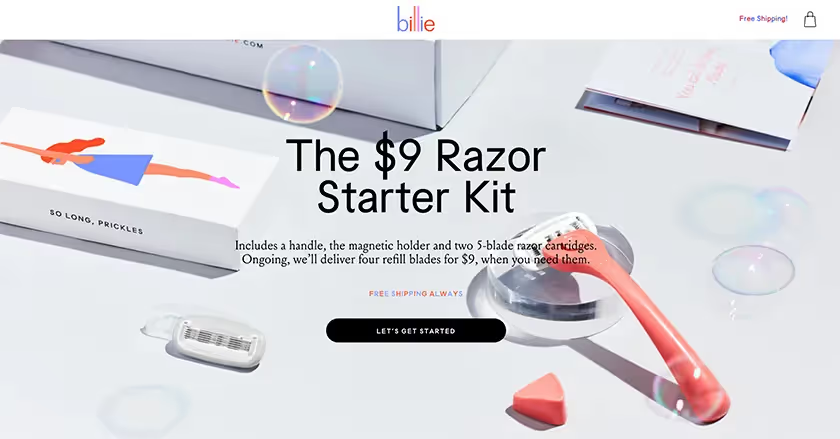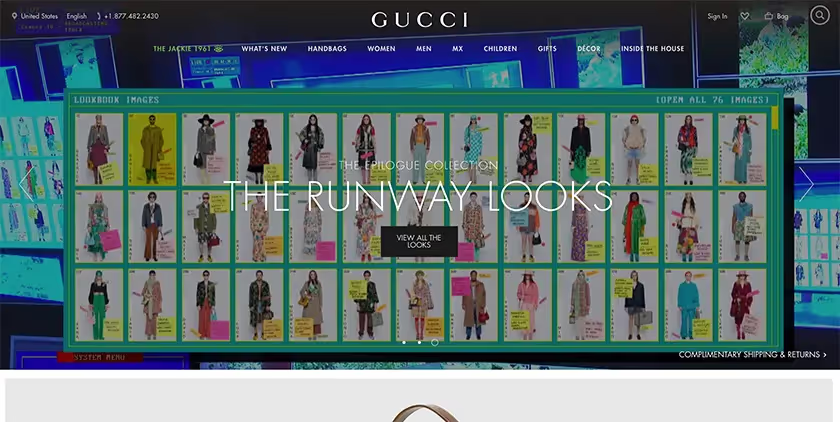Should My Brand Have its Own D2C Site? Pros & Cons
To D2C or not to D2C? We break down the pros and cons of having a direct-to-consumer website for ecommerce brands.
Amazon, Walmart Marketplace, eBay, Instagram—in the digital age, there is no shortage of channels to sell your products on, nor should you immediately rule any of them out. An omnichannel ecommerce approach allows you to give shoppers a seamless customer service experience, it raises your brand recognition, and it increases profits. That’s why it’s important to thoughtfully consider all of your options. So what about selling on a direct-to-consumer (D2C) website? Here’s what you should know before making the leap.
Pros of the direct-to-consumer strategy
The D2C approach to business is extremely attractive to brands and manufacturers, and for good reason. D2C distribution, when it’s successful, allows manufacturers to cut out the middleman and enter the market directly to sell their goods, giving them greater control over their brand, their marketing, and their reputation.
Furthermore, a D2C site allows brands to offer as many of their products as they’d like at any time of the year (they aren’t limited by the seasonal/limited needs of retailers) and it streamlines the customer service experience. Interactions with customers are more direct, allowing brands to understand them better and address their needs more efficiently. Gone is being at the shifting whims and mercy of marketplaces like Amazon or Walmart. Instead, you’re providing a quality product with a quality experience uniquely your own.
Apple is an example of a D2C brand for whom this approach works very well. Apple has exceptionally good control over their products and the way their products are distributed. Customers know them and trust them to deliver a high-quality product, so they’ll traffic Apple’s website to make their purchases.

Apple’s D2C gives customers a more intimate experience with their brand than they’d get on sites like Best Buy or Amazon, and because Apple customers are so loyal to the brand, it’s an experience they’ll seek out online.
Cons of the direct-to-consumer strategy
That said, the D2C approach isn’t a quick and easy path to success. It’s important to keep in mind that entering this space puts you in direct competition with sites like Amazon and Walmart. You have to consider what you’re offering that customers could not get from these places or from other places offline.
Because creating a website can be so expensive, it’s important to strategize about what does and does not work for your products and determine logistical factors that may aid or be an obstacle to your brand. From just a pure revenue source or ecommerce channel growth perspective, I would argue that most brands probably shouldn't have a D2C site, unless there’s some sort of a niche or they’re going to be doing it in another unique way.
Is a D2C site worth it for you?
The equation that brands should focus on when considering if a D2C site is worth it is:
Purchase Velocity (or usage)/Price
If an item is a high-usage, low-priced item, it will be difficult to sell on its own on a D2C site without a specialized experience. If your brand sells a low-usage, higher-priced item, a D2C may be a great fit.
High usage, low-priced items
Low cost products with high usage, like toothpaste, soap, or pens may not make sense to build a D2C site around because customers are getting these products from other sources like Amazon without the additional costs for shipping, and they’ll have little incentive to purchase these products directly from brands. I don’t know what consumer is going to go out of their way to type in “Snickers.com” to buy Snickers only from Snickers and wait for that package to show up on their doorstep when they could add that product to their Amazon or Walmart or whatever their normal routine grocery cart is. If you do have a high usage, low-priced item, one thing that might make a D2C site worth it is building a unique customer service experience around your product, such as personalized product packaging, a monthly subscription box, or a one-time holiday gift bag.

Billie is one brand that sells a high-usage product on a D2C site that might otherwise not work except for the unique customer experience. Billie manufactures razors, and they offer a $9 subscription service that supplies customers with four new razor blade cartridges each month. Since their customers are already regularly buying razors, Billie’s competitive price point, their free shipping, and their monthly delivery service give them an edge up and a great use of their D2C site.
High priced items and luxury goods
For items with high price points and a low purchase velocity, a D2C site may be a great fit. Having a website for these goods allows you to build an intimate customer experience invested shoppers can look forward to and transactions shoppers can trust. This is especially important in the world of luxury goods. As a consumer, I’m going to want to go to the source. I’m going to want to buy the Gucci bag, and I want it to show up on my doorstep in a Gucci box. I want to have that opening experience that’s very unique and custom, because I just dropped some serious cash, and there’s no way I want to risk that on Amazon or Walmart.

The experiences you build around your brand on your D2C can also increase your name recognition and attract new customers. Other products that may thrive with a D2C model are tech products, furniture, jewelry, and luxury goods, to name a few.
Consider logistics and shipping
Price points and product usage aren’t the only things you need to consider when considering a D2C. It’s also important to look at the logistics of distributing your product, particularly if you sell perishable items like meat or vegetables. It’s difficult for consumers to trust that products like this will ship to them without spoiling or being tampered with, which makes building a D2C experience around them a big risk. If I sell chicken breasts in a grocery store, I’m not going to do the D2C site, because it has to ship cold, and the logistical challenges and the cost to ship are just so immense that it doesn’t make sense.
The other thing to look at is the cost to ship your products. When it comes to high-velocity, low-priced items, it’s essentially mandatory that brands offer two-day shipping, otherwise they won’t be able to compete. If you can’t make that happen financially, you probably shouldn’t offer a D2C site. The more expensive and less volatile a product is, the less necessary two-day shipping becomes.
With the right plan and the right product, a D2C website can be a great channel to grow your brand and the customer experience with your brand. For more information on how you can start a D2C site or more resources for growing your business, contact our Pattern experts.


.jpg)





.jpg)

